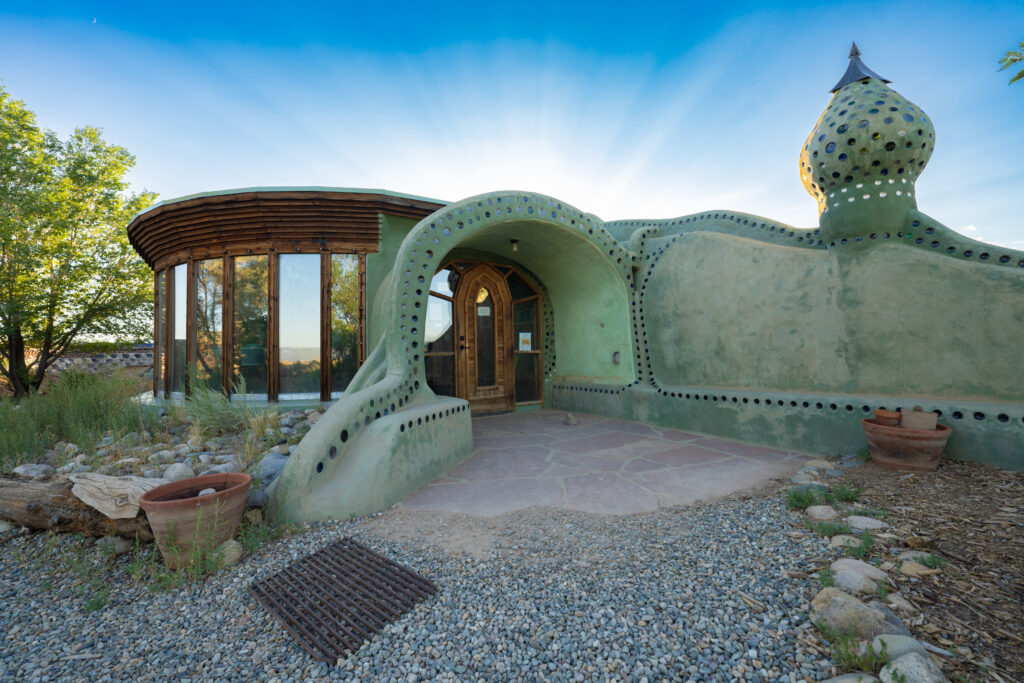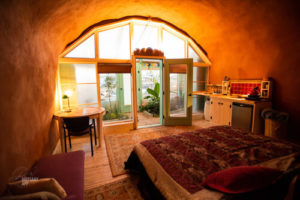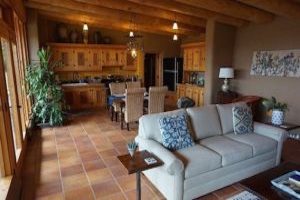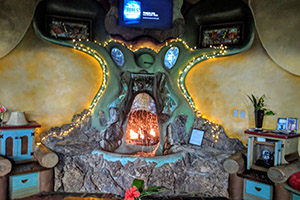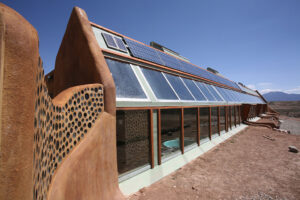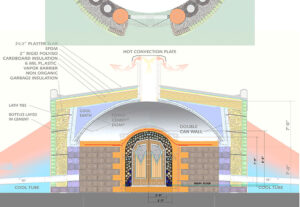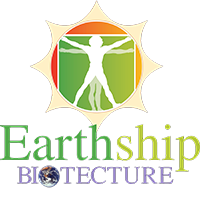Thermal Mass - Heating & Cooling Buildings
Keep the building warm in the winter and cool in the summer
with little to no utility bills / fossil fuels.
This increases both psychological and physiological comfort.
Both the International Building Code and the International Residential Code have requirements for maintaining a minimum temperature in buildings. They do not have requirements for a maximum temperature in buildings though there are ventilation system requirements and there are reasonable standards for comfort.
“All design projects should engage the environment in a way that dramatically reduces or eliminates the need for fossil fuel.”
The 2010 Imperative, Edward Mazria,AIA, Founder of Architecture 2030
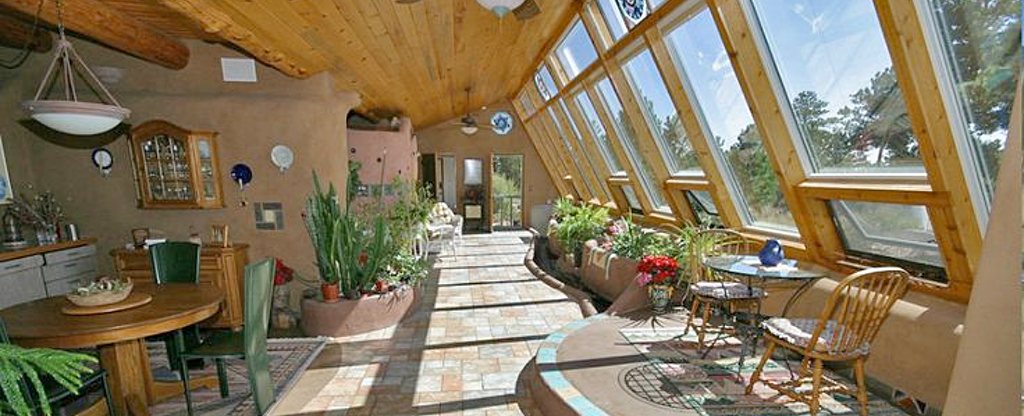
Heating Buildings
Earthship Biotecture keeps buildings warm by interfacing with the sun and the earth. Solar gain, or heat from the sun enters the building through windows facing south or north in the southern hemisphere. The heat from the sun gets absorbed by the walls and floors of the building. The walls and floors must be an earth-type material like stone or mud or earth to absorb and hold the heat. Earth-type materials have thermal mass, which can absorb and ‘store’ temperature like a battery. The walls of an Earthship are made of rammed earth in recycled automobile tires. Highly compacted earth holds temperature very well.
At night, the air temperature in the room(s) drops causing the heat stored in the walls and floors to move out into the room. This is a law of physics, heat moves to cold. This absorption and release of temperature by thermal mass keeps the building warm when it is cold/cool outside.
Cooling Buildings
Earthship Biotecture keeps buildings cool by interfacing with the earth and the movement of air. Earthship Biotecture surrounds most of the building with thermal mass. This thermal mass absorbs temperature and when connected to the earth without being insulated from the earth, the temperature is ‘wicked away’ from the building. Cooling tubes within the thermal mass surrounding the building brings in air from the outside through the thermal mass where it is cooled down, then into the building with cooler air.
Off-Grid Living by Earthship Biotecture
There is absolutely no cutting back on comfort; instead the level of comfort is considerably increased.
A Passive House / Building is a building standard that is energy efficient, comfortable, affordableand ecological ALL at the same time.
Passive House / Building is not a brand name, but a construction concept that can be applied by anyone and that has stood the test of practice and literally thousands of years of time. These are modern, beautiful, high-value homes.
Passive Buildings allow for heating and cooling related energy savings of up to 90% compared with typical building stock and over 75% compared with average new builds. In terms of heating oil, Passive Houses use less than 1.5 litres per square meter of living space per year – far less than typical low- energy buildings. Similar energy savings have been demonstrated in warm climates where buildings require more energy for cooling than for heating (thermal mass).
Passive Houses are also praised for their high level of comfort. They use energy sources inside the building such as using the heat from an oven or solar heat entering the building – making heating a lot easier.
Appropriate windows with good insulation and a building shell consisting of good insulated exterior thermal mass walls, roof and floor slab keep the heat during winter in the house – and keep it out during summer.
Ventilation consistently supplies fresh air making for superior air quality without causing any unpleasant draughts. This is a guarantee for low Radon levels and improves health conditions.
Passive solar technologies absorb heat from the sun via thermal mass (water, rock, stone, mud, etc.), cause ventilation via cooling tubes and operable windows with little use of any electrical energy.
Every south-facing window creates a direct-gain system, while windows facing east, west, and north lose more heat than they gain in the winter. The greenhouse effect, acts as a one-way heat valve. It lets the short-wave solar energy enter but blocks the heat from escaping. The thermal mass inside the building then absorbs this heat, both to prevent daytime overheating and to store it for nighttime. The proper ratio of mass to south-facing glazing is important.
Since in direct gain the building is the collector, all contents, such as the drywall, furniture, and books, act as thermal mass. However, the contents are usually not sufficient to store an adequate amount of heat without additional thermal mass. When there is no concrete floor or when even more thermal mass is desired, it can be provided in the walls, water containers, floors, or phase-change materials.
Although solar heat can be supplied by convection to the rooms on the north side of a building, it is much better to supply solar radiation directly by means of south-facing clear-story windows. Besides bringing warming sunlight further into the building, clear-stories also provide excellent day- lighting, because light from above is best.
Most direct-gain systems consist of straight walls facing due south or as close to south as possible. Direct gain is the most efficient when energy collection and first costs are the main concerns.

Cooling Tubes
Electricity free cooling based on ancient, global principles. These in-ground PVC cooling tubes are also known as air tubes, earth air tubes, a ground-coupled heat exchanger, an earth-air heat exchanger, thermal labyrinth, heat recovery ventilation, geothermal energy tubes, sustainability tubes, or a number of other terms.

